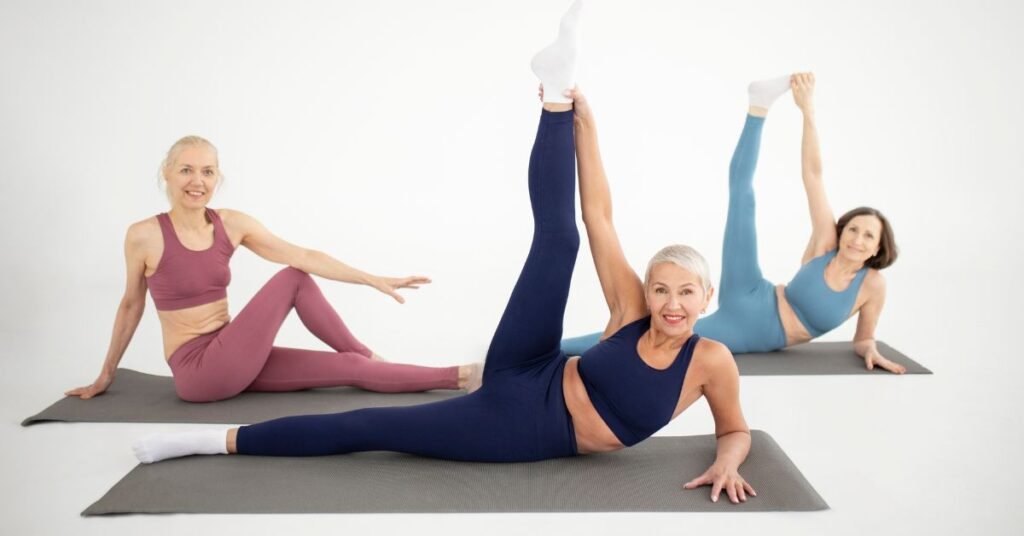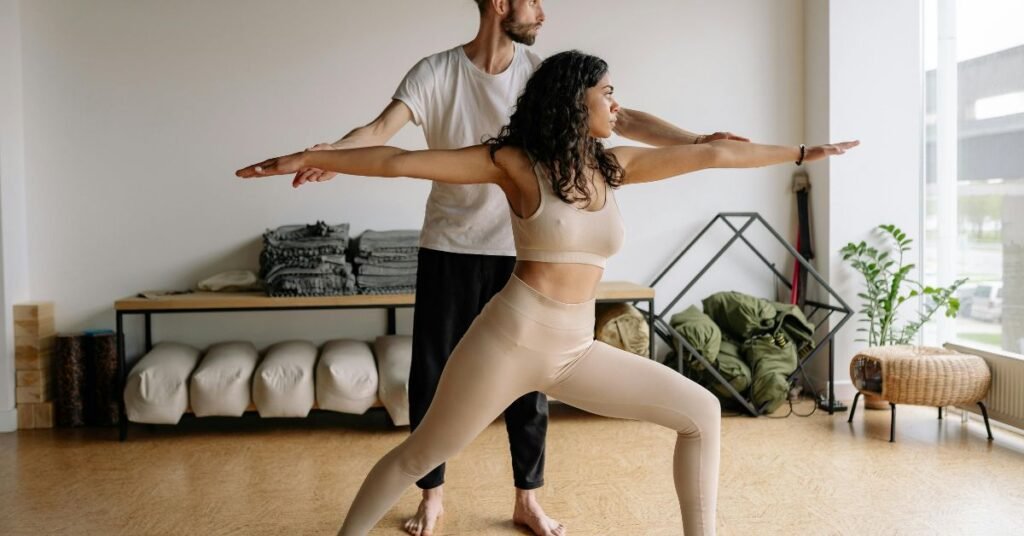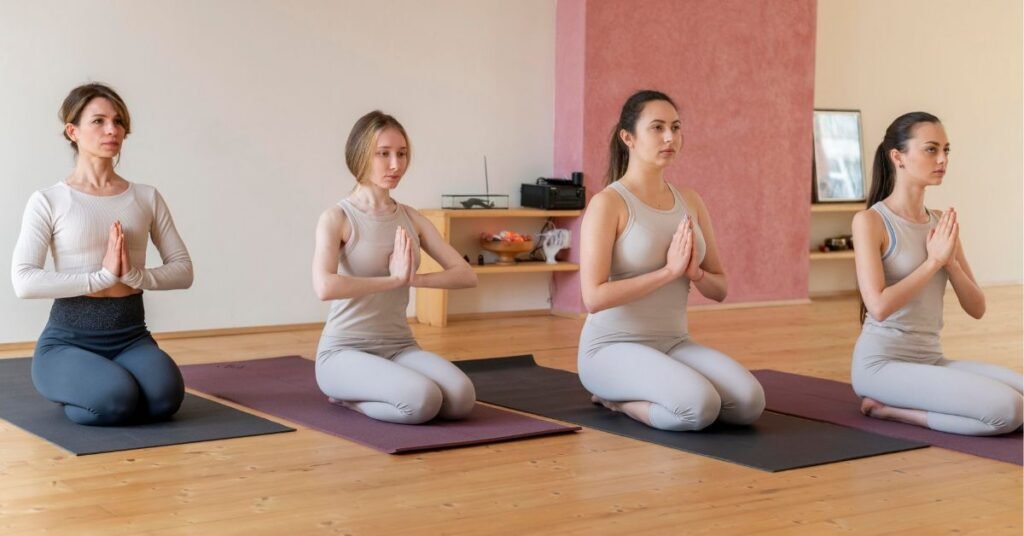Introduction
Trauma affects the body and mind in deep and lasting ways. It can make everyday life feel overwhelming, triggering anxiety, depression, and even physical discomfort. But did you know that yoga can be a powerful tool for healing trauma? The role of yoga in trauma recovery goes beyond just physical movement; it provides a safe space for reconnecting with the body, calming the nervous system, and fostering emotional resilience.
In this blog post, we’ll explore five specific yoga practices that can support trauma recovery. Whether you’re new to yoga or already have experience, these techniques can help you feel more grounded, safe, and at peace in your body.
How Yoga Supports Trauma Recovery
When we experience trauma, our body often stays in a state of fight, flight, or freeze. Yoga can help bring us back to a place of safety by:
- Reducing stress hormones like cortisol
- Activating the parasympathetic nervous system (rest and digest mode)
- Encouraging mindfulness and body awareness
- Helping release stored tension and emotions
By practicing yoga regularly, we can restore balance, rebuild trust in our bodies, and create a sense of inner peace.
1. Grounding Poses for Stability
Trauma can make us feel disconnected from our bodies. Grounding poses help bring us back to the present moment, making us feel safe and stable. These poses focus on connecting with the earth and using the breath to anchor ourselves.
Try These Grounding Poses:
- Mountain Pose (Tadasana) – Stand tall with feet firmly planted, feeling the strength of the ground beneath you.
- Child’s Pose (Balasana) – Fold forward with arms stretched out or resting by your sides, allowing yourself to feel comforted.
- Warrior II (Virabhadrasana II) – A strong, empowering pose that fosters stability and confidence.
Pro Tip: Focus on deep, slow breaths while holding these poses to enhance their calming effects.
Readmore: The Best Yoga Poses for Your Dosha Type
Readmore: Yoga and Ayurveda: Natural Ways to Improve Digestion
2. Breathwork for Calming the Nervous System
Breathing exercises, or pranayama, can help regulate the nervous system, shifting us from a state of stress to a state of relaxation. Many people who have experienced trauma hold their breath without realizing it, leading to increased anxiety. Conscious breathing can break this cycle.
Try These Breathing Techniques:
- Belly Breathing (Diaphragmatic Breathing) – Place one hand on your belly and the other on your chest. Inhale deeply, feeling your belly expand. Exhale slowly.
- 4-7-8 Breathing – Inhale for 4 counts, hold for 7 counts, exhale for 8 counts. This helps to calm the mind and body.
- Alternate Nostril Breathing (Nadi Shodhana) – Close one nostril, inhale through the other, then switch. This balances energy and reduces anxiety.
Pro Tip: Practice breathwork daily, especially during stressful moments, to train your body to relax more easily.
3. Restorative Yoga for Deep Healing
Restorative yoga involves gentle, supported poses held for longer periods, allowing the body and mind to fully relax. This type of yoga is particularly helpful for trauma recovery as it creates a sense of safety and deep relaxation.
Try These Restorative Poses:
- Supported Bridge Pose – Place a yoga block under your lower back while lying on your mat for gentle support.
- Legs-Up-The-Wall Pose (Viparita Karani) – Lie on your back with your legs resting up against a wall for full-body relaxation.
- Reclining Bound Angle Pose (Supta Baddha Konasana) – Lie down with the soles of your feet together and knees relaxed outward, using pillows for support.
Pro Tip: Use soft lighting, calming music, or essential oils to enhance relaxation during your practice.
4. Mindfulness and Meditation for Emotional Regulation
Trauma can cause racing thoughts, flashbacks, and emotional distress. Mindfulness and meditation help create mental space, allowing us to observe our emotions without becoming overwhelmed.
Try These Mindfulness Practices:
- Body Scan Meditation – Close your eyes and bring awareness to each part of your body, noticing any tension or discomfort.
- Loving-Kindness Meditation – Silently repeat kind phrases toward yourself and others, such as “May I be safe, may I be at peace.”
- Journaling with Gratitude – Write down three things you are grateful for each day to shift your mindset toward positivity.
Pro Tip: Start with just five minutes a day and gradually increase your meditation practice over time.
Readmore: 5 Inspiring Yoga Routines for Nature Lovers
Readmore: How Yoga Aligns Your Chakras for Better Energy Flow
5. Yoga Nidra for Deep Relaxation and Releasing Trauma
Yoga Nidra, also known as “yogic sleep,” is a guided meditation practice that takes you into a deeply relaxed state between waking and sleeping. It helps rewire the brain, reduce stress, and release trauma stored in the body.
How to Practice Yoga Nidra:
- Lie down in a comfortable position.
- Close your eyes and follow a guided Yoga Nidra meditation (available online or through apps).
- Focus on the instructor’s voice as they lead you through body awareness and visualization exercises.
Pro Tip: Practice Yoga Nidra before bed to improve sleep and reduce nighttime anxiety.
FAQs
Q1. Can yoga completely heal trauma?
Yoga is a powerful tool for trauma recovery, but healing is a personal journey that may also require therapy, support groups, or other healing modalities. Yoga can complement these methods by helping regulate emotions and reconnect with the body.
Q2. How often should I practice yoga for trauma recovery?
Consistency is key. Even practicing yoga for 10-20 minutes a day can make a difference. Start with what feels manageable and build from there.
Q3. What if I get triggered during yoga?
If you feel triggered, pause and focus on your breath. You can also return to a grounding pose like Child’s Pose or take a break. Working with a trauma-informed yoga teacher may also help.
Q4. Do I need special equipment to practice trauma-sensitive yoga?
No special equipment is necessary. A comfortable mat and possibly a few pillows or blankets for support are all you need.
Q5. Can beginners practice trauma-sensitive yoga?
Absolutely! Trauma-sensitive yoga is accessible to all levels. Start slow, listen to your body, and choose gentle poses that feel safe and comfortable.
Readmore: Reverse Tabletop Pose Simplified
Readmore: Unlock Squatting Garland Pose
Final Thoughts
The role of yoga in trauma recovery is powerful and transformative. By incorporating these five yoga practices—grounding poses, breathwork, restorative yoga, mindfulness, and Yoga Nidra—you can support your healing journey in a gentle and effective way.
Remember, healing takes time, and it’s okay to go at your own pace. Be kind to yourself, listen to your body, and seek support when needed. Yoga is not about perfection—it’s about creating a space where you feel safe, supported, and at peace.
Would you like to share your experience with yoga and trauma recovery? Drop a comment below—we’d love to hear your story!

Sonu is a passionate yoga teacher with over 6+ years of experience helping individuals find balance, strength, and inner peace through the transformative power of yoga. As the creator of Pure Yoga Vibes, Sonu shares expert insights, inspiring practices, and a wealth of knowledge to support your wellness journey. Dedicated to creating a space for growth and mindfulness, Sonu’s mission is to make yoga accessible and enjoyable for everyone. For inquiries or collaborations, feel free to reach out at contact@pureyogavibes.com.



